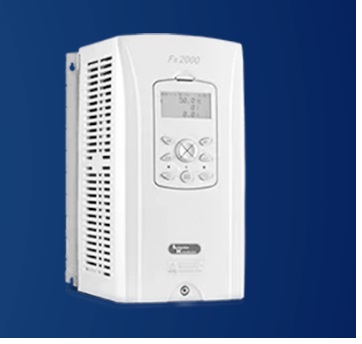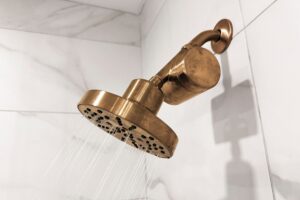Electric Switch for Home: What You Need to Know About Prices and Types
When designing or upgrading a home, people often prioritize aesthetic elements such as wall colors, flooring, lighting, and furniture. However,...
When designing or upgrading a home, people often prioritize aesthetic elements such as wall colors, flooring, lighting, and furniture. However, one of the most crucial—and frequently overlooked—components of home interiors is the electric switch for home use. These switches not only control your lighting and appliances but also significantly impact your home’s safety, convenience, and style.
In today’s rapidly evolving electrical market, choosing the right electric switch has become more important than ever. From sleek modern designs to smart automation features, homeowners have access to a broad variety of switches. But along with the options comes the challenge of understanding the right type of switch and the corresponding price of switches that suit your home and budget.
This post will serve as a comprehensive guide to help you understand the types of electric switches available for home use, how to assess quality, and what price range you can expect based on features and brands.

Why the Right Electric Switch for Home Matters
An electric switch does more than simply turn on a light. It is the user interface between you and your home’s electrical system. Whether it’s controlling fans, appliances, or lighting, the switch should operate smoothly, safely, and reliably.
Here are a few reasons why choosing the right electric switch is important:
Safety: A high-quality switch ensures proper insulation, arc prevention, and overload resistance.
Longevity: Good switches last longer without requiring frequent replacements.
Aesthetics: With design-forward options, switches can complement your home décor.
Functionality: Modern switches often come with dimmers, indicators, and smart features that add value.
Therefore, investing time in selecting the right electric switch is not only wise but essential for building a smart and secure home.
Common Types of Electric Switches for Homes
When selecting an electric switch for home, it’s important to know the different types and their applications. Each switch type serves a different function and has a different design, making it suitable for various setups.
Single Pole Switches
These are the most common switches used in homes. A single pole switch controls one light or device from a single location. They are ideal for standard rooms and areas where control from multiple locations is not needed.
Double Pole Switches
Double pole switches are typically used for heavy-duty appliances. These switches can control a device using two different circuits and are ideal for areas where high power loads are managed.
Three-Way and Four-Way Switches
These switches are used in areas where you want to control a light or appliance from two or more locations—such as staircases or large halls. Three-way switches are the most common for two-location control, while four-way switches are used for three or more points of control.
Dimmer Switches
Dimmer switches allow users to adjust the brightness of lighting. They are commonly used in bedrooms, living rooms, or entertainment areas to set different lighting moods and save energy.
Smart Switches
With the rise of smart homes, smart switches have become increasingly popular. These switches can be controlled via mobile apps or voice assistants like Alexa and Google Assistant. They often support scheduling, automation, and remote access.
Touch and Sensor Switches
For ultra-modern homes, touch-sensitive and sensor-based switches are now widely available. These switches offer touchless or soft-touch operation and are often used in luxury residences.
Key Features to Look for in a Home Electric Switch
When choosing an electric switch for home, it’s essential to look for features that enhance both safety and usability:
Fire-resistant materials: Ensures safe operation over time.
Smooth operation: High-quality mechanisms reduce noise and wear.
Child safety shutters: Protect young children from accidental shocks.
Easy installation: Modular switches with labeled wiring and frames.
LED indicators: Help locate the switch in the dark.
Customizable modules: Allow the switchboard to include sockets, dimmers, USB outlets, and more.
Aesthetic Considerations in Modern Switch Design
Gone are the days when switches were just functional boxes on the wall. Modern electric switches come in a variety of styles, finishes, and colors to match any interior. Glass, matte, brushed metal, and wood-textured finishes are all available to suit different décor styles.
You can now choose from:
Modular designs that let you mix and match different elements.
Color options to match or contrast with wall finishes.
Minimalist switches for a sleek, invisible look.
The design choice is ultimately a blend of your personal style and functional requirements.
Understanding the Price of Switches
The price of switches varies depending on brand, functionality, design, and material. Here’s a general overview of how pricing is structured in the market:
Budget Range
Basic plastic single pole switches are available at very affordable prices. These are widely used in rental properties and budget constructions.
Mid-Range
Modular switches with a good balance of aesthetics and performance fall into the mid-range. These often feature branded quality, flame-retardant materials, and customizable modules.
Premium Range
Premium switches include designer plates, smart features, touch controls, and high-end finishes. These can cost significantly more but add immense value in terms of design, durability, and tech integration.
Additional features like USB charging ports, LED night indicators, Wi-Fi connectivity, and remote control options can increase the price but also deliver added functionality.

Factors That Influence the Price of Switches
Several variables determine the price of switches:
Brand reputation and warranty
Material quality (polycarbonate, metal, glass)
Type of switch (single pole, smart, dimmer, etc.)
Design and customization
Certifications (ISI, CE, RoHS compliance)
Always compare features and durability rather than just going for the lowest price. A well-priced switch that lasts for years is better than a cheaper one that needs frequent replacement.
Installation and Maintenance Tips
While buying quality switches is important, proper installation ensures safety and efficiency. Here are a few tips:
Always use licensed electricians for installation.
Match the switch capacity with the appliance load.
Regularly check for overheating or discoloration.
Avoid overloading circuits connected to a single switch.
Keep the switches clean and dry.
Conclusion
The electric switch for home is a small yet vital element that combines utility, design, and safety. With the availability of diverse types and styles—from traditional single pole switches to smart touch-enabled ones—homeowners have more choices than ever before. Understanding your requirements, room layout, and décor style can help you choose the right switch.
Don’t forget to evaluate long-term value, not just initial cost, when considering the price of switches. High-quality switches can offer better safety, durability, and visual appeal, making them a smart investment for your home.
Incorporating modern electric switches not only improves the functionality of your living space but also elevates its overall aesthetic. With a multitude of options available in the market, being informed about types and prices will help you make confident decisions tailored to your home’s needs.
For homeowners looking for premium electrical solutions that balance innovation, quality, and design, Lauritz Knudsen Electrical and Automation offers a wide range of modular switches, smart solutions, and beautifully crafted plates. Trusted by professionals and homeowners alike, their products exemplify safety, style, and durability—ensuring your home is powered with excellence.




